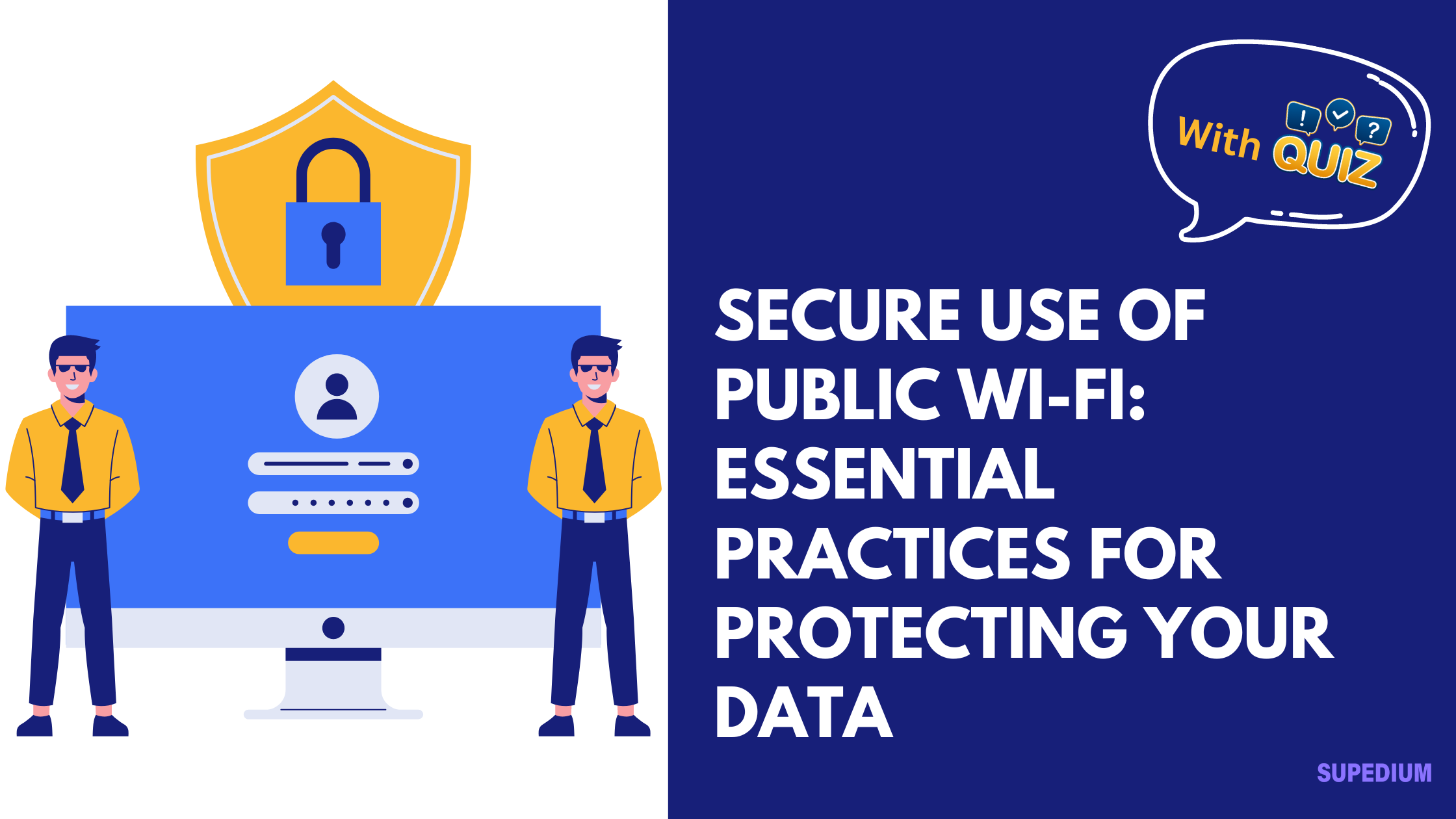Table of Contents
![]()
In an age where connectivity is integral to our daily lives, public Wi-Fi networks have become ubiquitous, providing convenient access to the internet in places like cafés, airports, and hotels. While these networks offer significant convenience, they also present considerable security risks. Understanding these risks and implementing best practices is crucial to protect your personal information. This article provides a comprehensive guide to securely using public Wi-Fi.
Understanding the Risks of Public Wi-Fi
1. Man-in-the-Middle Attacks
Man-in-the-middle (MitM) attacks occur when an attacker intercepts and potentially alters the communication between a user and a network. In a public Wi-Fi setting, attackers can position themselves between your device and the router to capture sensitive data such as login credentials or personal information. This can happen without your knowledge, making it a significant threat to your privacy.
2. Rogue Hotspots
Rogue hotspots are fake Wi-Fi networks set up by attackers to lure unsuspecting users. These networks often have names similar to legitimate ones, making them difficult to distinguish. When connected, users might unknowingly provide their data to the attacker, who can then exploit this information for malicious purposes.
3. Packet Sniffing
Packet sniffing involves capturing data packets as they travel through the network. Attackers use specialized tools to intercept and analyze these packets, which can contain sensitive information. Without encryption, this data is visible to anyone with the right tools, putting your personal information at risk.
4. Session Hijacking
Session hijacking occurs when an attacker takes over an active session between a user and a website. By intercepting session cookies or tokens, the attacker can gain unauthorized access to your accounts and perform actions as if they were you, compromising your data and privacy.
Best Practices for Secure Use of Public Wi-Fi
1. Use a VPN (Virtual Private Network)
A VPN is one of the most effective tools for securing your online activities on public Wi-Fi. It creates a secure, encrypted connection between your device and a remote server, making it difficult for attackers to intercept or access your data. When selecting a VPN, consider reputable services like NordVPN, ExpressVPN, or CyberGhost to ensure reliable protection.
2. Avoid Accessing Sensitive Information
When using public Wi-Fi, avoid logging into sensitive accounts such as online banking or making purchases. Public networks are more vulnerable to attacks, and accessing sensitive information increases the risk of data theft. If you must access such accounts, use a secured connection through a VPN.
3. Disable Automatic Connection to Networks
Many devices are set to automatically connect to available Wi-Fi networks. This convenience can be risky, as your device might connect to an insecure or rogue network. Disable automatic connections and manually select networks you trust to reduce this risk.
4. Enable Two-Factor Authentication (2FA)
Two-factor authentication adds an extra layer of security by requiring a second form of verification in addition to your password. Even if an attacker obtains your password, they would still need the second factor to access your account. This significantly enhances your security on public Wi-Fi.
5. Keep Software and Devices Updated
Regularly updating your operating system, applications, and antivirus software is crucial for maintaining security. Updates often include patches for vulnerabilities that could be exploited by attackers. Ensure automatic updates are enabled to keep your device protected.
6. Use HTTPS Websites
When browsing the web, ensure the websites you visit use HTTPS rather than HTTP. HTTPS encrypts the data transmitted between your browser and the website, making it difficult for attackers to intercept or tamper with your information. Look for a padlock icon in the address bar as an indication of a secure connection.
7. Turn Off Sharing Features
Public networks are not the place for file and printer sharing. Disable sharing features and network discovery settings to prevent unauthorized access to your files and devices. This can usually be done through your device’s network and sharing settings.
Tools and Technologies for Enhanced Security
1. Firewall Settings
A firewall helps monitor and control incoming and outgoing network traffic based on predetermined security rules. Ensure your firewall is enabled and properly configured to protect against unauthorized access and potential attacks on public Wi-Fi.
2. Antivirus and Anti-Malware Software
Installing reliable antivirus and anti-malware software is essential for protecting your device from malicious attacks. These programs can detect, quarantine, and remove threats that might compromise your security on public networks. Popular options include Norton, McAfee, and Bitdefender.
3. Network Monitoring Tools
Network monitoring tools help detect unusual activity on your network. Tools like Wireshark and GlassWire can provide insights into network traffic and alert you to potential threats. Regular monitoring can help identify and mitigate security issues early.
Responding to Security Incidents
1. Recognizing Signs of a Breach
Common signs of a security breach include unusual account activity, unexpected pop-ups, and sluggish device performance. If you suspect a breach, act quickly to secure your data and prevent further damage.
2. Steps to Take if Your Data is Compromised
If your data is compromised, immediately change your passwords and enable 2FA on your accounts. Contact your bank or relevant service providers to alert them of the breach. Monitor your accounts closely for any unauthorized transactions or changes.
3. Reporting Security Issues
Report security issues to the network administrator if you encounter them on a public network. Additionally, consider reporting significant breaches to cybersecurity organizations and relevant authorities to help prevent future incidents.
Conclusion
While public Wi-Fi networks offer convenience, they come with inherent risks that can compromise your personal data. By understanding these risks and following best practices—such as using VPNs, avoiding sensitive transactions, and keeping your software updated—you can significantly enhance your security while using public Wi-Fi. Stay vigilant, and protect your information to enjoy the benefits of connectivity without compromising your privacy.






Be the first to comment